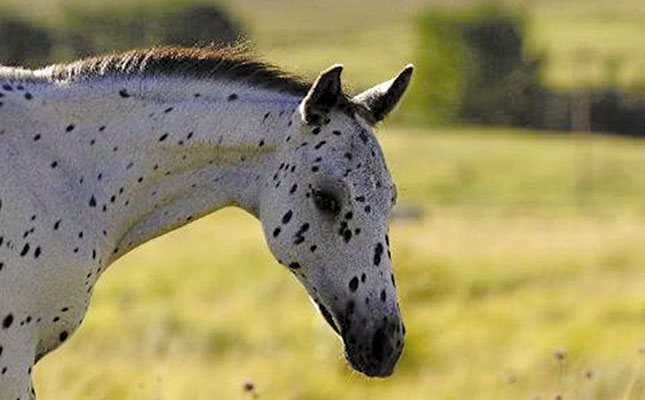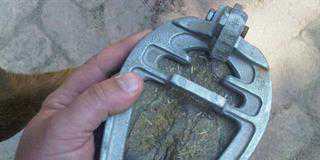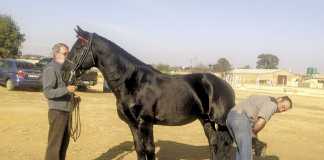
Equine polysaccharide storage myopathy (EPSM) occurs when your horse cannot process and use the fuel you provide it in starchy grains. This then ‘ties up’ the muscles. It is a genetic condition, and there are two types. Type 1 is when the body changes the amino acid sequence of the glycogen synthase enzyme. About 20 breeds have been found to have Type 1 EPSM.
It can occur in American Paint Horses and Appaloosas. Quarter Horse owners and breeders know the disease simply as polysaccharide storage myopathy (PSSM). It occurs in Draught and Draught crossbreeds, warmbloods and Morgans, while some Arabians and thoroughbreds have also tested positive. Most horses with EPSM can be helped through exercise and a diet low in starch and sugar.
Diagnosis is through a blood test, which measures the protein levels in the sample to ascertain the extent of the muscle damage. When muscle cells are injured, they release the proteins creatine kinase (CK) and aspartate transaminase (AST) within hours of the injury occurring. It is important to note that ‘tying up’ is not only caused by EPSM.
CK and AST will be found in the blood with any kind of muscle damage. However, with other forms of tying-up, blood CK activity returns to normal within days if horses are rested. Horses with EPSM are likely to have high CK levels even if they have been rested for weeks after an episode of tying up. Tying-up can be caused by too much lactic acid in the muscle, but this is not the case with EPSM.
In other diseases, glycogen accumulates because the muscle lacks an enzyme (protein) necessary to burn glycogen as an energy source. By contrast, studies have shown EPSM to be a unique glycogen storage disease because affected horses have all the necessary enzymes to burn glycogen in their muscles. Instead, in these horses, muscle cells remove sugar from the blood stream and transport it to their muscles at a faster rate, thereby making more glycogen than is the case in normal horses.
Symptoms
Most horses first show signs of EPSM from the age of two or three years. Symptoms can include skin twitching, stiffness, firm and painful muscles, sweating, weakness and a reluctance to take part in light exercise. Occasionally gait abnormalities, mild colic and muscle wasting may also occur. Some horses will be reluctant to engage their hindquarters.
That is, they show discomfort if a farrier tries to trim or shoe hind feet, while the topline and hindquarter muscles are poorly developed, almost to the point of looking atrophied. Other horses display an odd hind-end ‘hitch’ at all gaits. Horses having an EPSM episode seem lazy, have a shifting lameness, tense up their abdomen and develop tremors in the flank area. Some will try pawing and rolling immediately after exercise.
When they stop moving they may stretch out as if to urinate. They will clearly be in pain and sweat a lot, and will have a history of muscle stiffness after work.
Management
EPSM is not curable. As noted, though, it can be managed through exercise and diet:
Exercise: Regular daily exercise is extremely important in managing horses with EPSM, even if it’s only for 10 minutes a day. Once fit, some EPSM horses will need just four days of exercise as long as they receive a daily turn out. For riding horses with Type 2 EPSM, a prolonged warm-up with adequate stretching is recommended.
Rest periods of between two and five minutes are also necessary.
Diet: In my opinion, most horses are very healthy and do not require concentrate. If your work load is moderate, teff or eragrostis is perfect. Add a sprinkle of a good multi-vitamin and mineral mix with probiotics. If your horse does a lot of work, then introduce fat. Horses with too little fat often have a cranky attitude toward exercise. The type and amount of fat depends on the individual horse, its weight and your budget.
In an easy-keeping horse, it’s cheapest to add oil or a solid fat supplement to chopped hay or hay replacer pellet.
Suitable oils include soya bean, corn, safflower, canola, flaxseed, linseed, fish, peanut and coconut. The oil can be introduced gradually, while you monitor the horse’s exercise tolerance and weight. The amount added is usually between a half a cup and two.
Never make drastic dietary changes to any horse. All changes must be gradual and in consultation with a vet.













